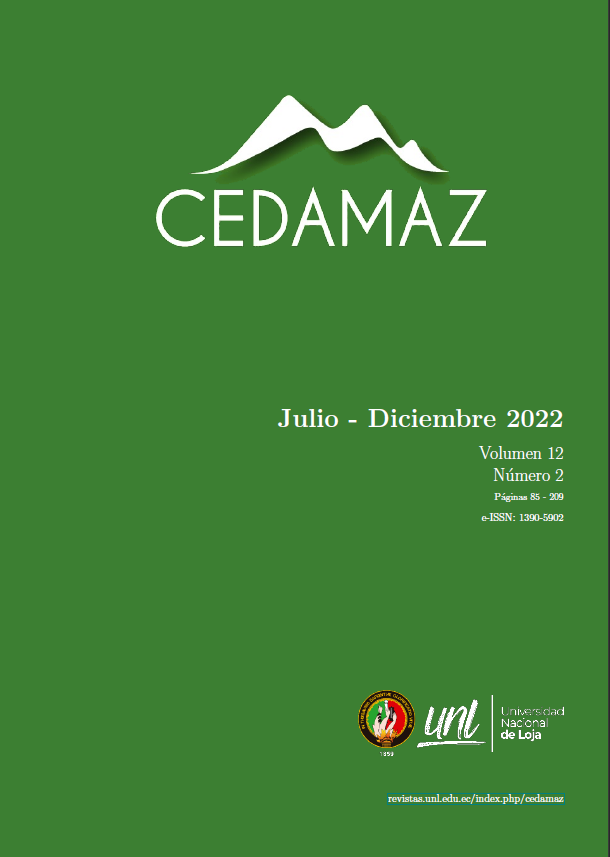Acute suppurative Epiploitis, surgical treatment: case report
DOI:
https://doi.org/10.54753/cedamaz.v12i2.1321Keywords:
Epiploic appendix, Acute abdomenAbstract
Acute epiploitis is an extremely rare clinical nosology, which is apparently caused by torsion or thrombosis of the vascular pedicle of an epiploic appendix; resulting in an ischemic infarction of the fat accompanied by peritoneal irritation, causing a picture of acute abdominal pain, similar to that of acute appendicitis or diverticulitis and thus leading to unnecessary surgical intervention. Next, a case of acute suppurative epiploitis is presented in a young male patient, presenting clinical symptoms of an acute abdomen, which, after corroborating the results of the complementary tests, is classified as an acute inflammatory abdomen, with localized peritonitis with altered laboratory data, which required surgical intervention prior to a diagnostic laparoscopy, finding a necrotic inflammatory mass with fibrin on the anterior side of the right omentum, adhered to the antimesenteric edge of the right colon 10 cm from the ileocecal valve, where He decides to perform, under surgical criteria, a clipping of the base of the epilopoic appendix and resection of the attached omentum. It is decided to carry out a histopathology of the extracted tissue, obtaining the result of an acute suppurative epiploitis. It is concluded, before a localized acute abdomen, especially in afebrile young patient who presents analytical alterations; leukocytosis with a shift to the left, confirming the diagnosis with ultrasound and/or tomography, and in this way we avoid starting antibiotic therapy or unnecessary surgical interventions. Treatment is conservative with oral analgesics, reserving surgery for complicated cases or with poor clinical evolution.References
Dornes R. et al., (2022). Apendagitis epiploica en paciente con la COVID-19. Revista Cubana de Medicina. 61(2)1-8. DOI: https://doi.org/10.32818/reccmi.a6n2a4
Gelrud, A. et al., (2022). Epiploic appendagitis. UptoDate. Obtenido de https://www.uptodate.com/contents/epiploicappendagitis
Herrera, R. et al., (2018). Apendagitis aguda: Caso clínico radiologico, presentación de un caso. Facultad de Medicina de la UNAM, 61(4), 3.
Jain T. et al., (2008). Case of the season: primary epiploic appendagitis: radiological diagnosis can avoid surgery. Semin Roentgenol. , 43:4-6. DOI: https://doi.org/10.1053/j.ro.2007.09.001
Legome, E. et al., (2020). Epiploic appendagitis: the emergency department presentation. J Emerg Med, 22:9–13. DOI: https://doi.org/10.1016/S0736-4679(01)00430-9
Madrazo, Z. et al., (2008) Apendicitis Epiploica. Cir. Esp. 86(6) 383-385. DOI: https://doi.org/10.1016/j.ciresp.2008.10.012
Martínez, M. et al., (2010). Apendicitis epiploica primaria: una causa de abdomen agudo no quirúrgico. Elseiver, 3. doi:10.1016/j.ciresp.2010.03.043 DOI: https://doi.org/10.1016/j.ciresp.2010.03.043
Núñez, T. et al., (2006). Epiploitis aguda: una causa inusual de abdomen agudo médico. An. Med. Interna (Madrid), 23(10), 507-508. DOI: https://doi.org/10.4321/S0212-71992006001000014
Patel, V. et al., (2007). Caecal epiploic appendagitis. A diagnostic andtherapeutic dilemma. Am Surg. , 73(8) 28–30. DOI: https://doi.org/10.1177/000313480707300821
Pereira, J. et al., (2004). Disproportionate fat stranding: a helpful CT sign in patients with acute abdominal pain. RadioGraphics. , 24:703-15. DOI: https://doi.org/10.1148/rg.243035084
Reyna, E. y Rondón, M. (2017). Apendagitis epiploica primaria simulando apendicitis aguda. Avances en Biomedicina, 6(3) 249-252.
Roldan, J. et al., (2016). Abdomen agudo por apendagitis epiplóica: Indicaciones para el tratamiento quirúrgico. RAPD ONLINE, 39(3), 3.
Sin K. et al., (2006). CT Features of primary epiploic appendagitis. Eur J Radiol. , 59(2):284-8. DOI: https://doi.org/10.1016/j.ejrad.2006.02.008
Solórzano, S. et al., (2016). Apendicitis epiploica. Causa poco común de abdomen agudo en niños. Presentación de un caso y revisión de la literatura. Acta pediatr. México. 37(2). DOI: https://doi.org/10.18233/APM37No2pp88-93
Tronco, G. et al., (2012). Epiploic Appendagitis a challenging imaging diagnosis. European Journal of General Medicine- Case Report, 9(4), 3. DOI: https://doi.org/10.29333/ejgm/82448
Valdés, R., (2022). Dolor abdominal en fosa ilíaca derecha en paciente de 79 años. Sanid. Mil. 77(4).
Yang, L. et al., (2019). Primary epiploic appendagitis as an unusual cause of acute abdominal pain in a middle-aged male. Medicine Baltimore. 98(33) DOI: https://doi.org/10.1097/MD.0000000000016846
Published
How to Cite
Issue
Section
License
Copyright (c) 2022 CEDAMAZ

This work is licensed under a Creative Commons Attribution-NonCommercial-NoDerivatives 4.0 International License.
Those authors who have publications with this journal, accept the following terms:
- After the scientific article is accepted for publication, the author agrees to transfer the rights of the first publication to the CEDAMAZ Journal, but the authors retain the copyright. The total or partial reproduction of the published texts is allowed as long as it is not for profit. When the total or partial reproduction of scientific articles accepted and published in the CEDAMAZ Journal is carried out, the complete source and the electronic address of the publication must be cited.
- Scientific articles accepted and published in the CEDAMAZ journal may be deposited by the authors in their entirety in any repository without commercial purposes.
- Authors should not distribute accepted scientific articles that have not yet been officially published by CEDAMAZ. Failure to comply with this rule will result in the rejection of the scientific article.
- The publication of your work will be simultaneously subject to the Attribution-NonCommercial-NoDerivatives 4.0 International (CC BY-NC-ND 4.0)









